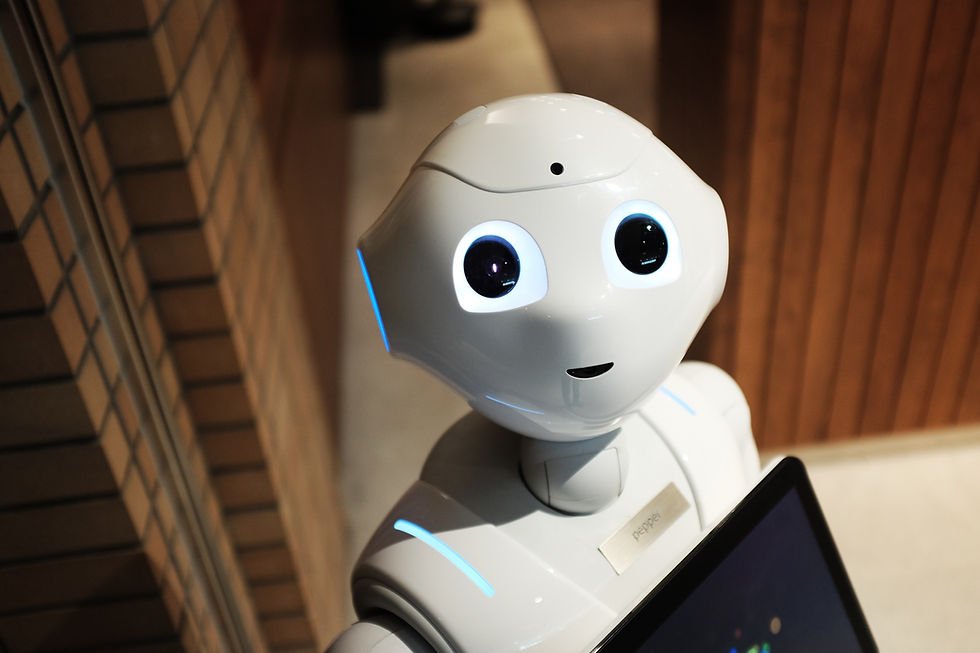Career Goals for Students: Setting and Achieving Them for 2026-2030 Graduates
- Nivedita Chandra
- Oct 3
- 4 min read
As a student graduating between 2026 and 2030, you’re navigating a paradox: traditional advice urges a rigid career plan, while the job market evolves rapidly due to AI, automation, climate change, and geopolitical shifts. The World Economic Forum’s Future of Jobs Report 2025 projects 170 million new jobs by 2030, with 92 million displaced, emphasizing adaptability over fixed paths.
This guide helps you set career goals for students that are flexible, skill-focused, and achievable, drawing from global trends to build resilience and clarity for your future.

The Future of Careers: 2026-2030 Landscape
The career world for 2026-2030 graduates is dynamic, with AI augmenting roles rather than replacing them. Career goals for students should account for this shift, focusing on hybrid skills that blend technology with human strengths. McKinsey estimates 200 million green jobs by 2030, while AI creates opportunities in ethics, governance, and design. Traditional paths like doctor or engineer remain viable but evolve - think AI-assisted healthcare or sustainable engineering.
Emerging Trends Shaping Career Goals for Students
AI-Augmented Roles: AI handles routine tasks; humans excel in creativity and judgment.
Green & Sustainability Careers: Roles in renewable energy and sustainable finance boom.
Health & Human Skills Jobs: Mental health coaching and wellness surge with aging populations.
Entrepreneurship & Hybrid Careers: Portfolio careers mix freelance, entrepreneurial, and employed work.
Jobs That Don’t Exist Yet: AI ethicists, digital twin architects, or space tourism guides.
If unsure, you’re not behind - career goals for students thrive on exploration in this uncertain era.
Top 10 Emerging Careers for Career Goals for Students
These high-growth domains signal where to focus career goals for students, based on WEF data:
1. AI and Human-AI Collaboration Specialists
Growth: 28%+; Roles like AI ethicists or prompt engineers.
Why: Responsible AI use demands human oversight.
2. Climate and Sustainability Analysts
Growth: 22%+; In green finance and carbon accounting.
Why: Climate-positive roles expand rapidly.
3. Mental Health and Wellness Coaches
Growth: 18%+; Psychology and coaching fields.
Why: Rising awareness boosts demand.
4. Cybersecurity and Digital Trust Officers
Growth: 24%+; Data protection in connected worlds.
Why: Rising threats require experts.
5. Healthcare Tech Integrators
Growth: 20%+; Bridging medicine with wearables.
Why: Tech-health fusion innovates care.
6. Experience Designers (XR, AR, VR)
Growth: 19%+; Immersive designs for education and retail.
Why: Virtual worlds transform industries.
7. EdTech Innovators and Learning Architects
Growth: 13%+; AI-driven personalized learning.
Why: Education evolves with tech.
8. Global Supply Chain Resilience Managers
Growth: 15%+; Adaptive logistics post-disruptions.
Why: Resilient chains are critical.
9. Green Construction & Urban Planners
Growth: 19%+; Sustainable city design.
Why: Smart cities address climate needs.
10. Portfolio Entrepreneurs and Creator Economy Leaders
Growth: 20%+; Hybrid income from content and platforms.
Why: Flexibility defines modern careers.
Career goals for students should align skills with these trends for maximum opportunity.
Step 1: Shift from Job Goals to Skill Goals
Fixed job titles limit career goals for students in a fluid market. Focus on skill stacks: combinations opening multiple doors. For marketing interests, build storytelling, data analysis, and AI tools. Unsure between law and policy? Prioritize research, writing, and negotiation.
By 2030, employers like Google prioritize skills over degrees. Career goals for students emphasizing capabilities ensure versatility.
Action: Create a “Future Skills List” with 5 capabilities (e.g., adaptability, coding, emotional intelligence).
Step 2: Use the North Star – Compass – Map Framework
Navigate uncertainty with this framework for career goals for students:
North Star: Broad purpose, e.g., “improve healthcare access.”
Compass: Values like stability or impact guide environments.
Map: Short-term milestones like internships or certifications.
Action: Write your North Star sentence, list 3 values, and set 2 milestones for the next year.
Step 3: Set SMART but Flexible Goals
SMART goals (Specific, Measurable, Achievable, Relevant, Time-bound) work, but add flexibility for career goals for students. Shift from “Product manager at Google by 2028” to “Complete two product internships and build a portfolio by 2026.”
Action: Set 1-2 SMART goals per year focused on skills and experiences.
Step 4: Learn to Run Career Experiments
Clarity comes from action. Treat career goals for students like startups - test and pivot. Experiments include AI ethics courses, NGO projects, or shadowing professionals.
Action: Commit to 2 experiments yearly; journal reflections on enjoyment and learnings.
Step 5: Build a Network, Not Just a Résumé
Networks drive career goals for students as much as skills. Focus on relationships with alumni, professors, and professionals.
Action: Identify 5 people to learn from; reach out with curiosity-driven questions.
Step 6: Track and Adapt
Measure career goals for students quarterly: skills strengthened, experiments tried, network expanded. Adapt based on trends and feedback.
Action: Schedule reviews every 3-6 months to iterate your plan.
Challenges and Misconceptions in Setting Career Goals for Students
Myth: Rigid Plans Guarantee Success: Flexibility trumps rigidity in 2025’s market.
Challenge: Uncertainty: Use experiments to build confidence.
Ethical Considerations: Prioritize sustainable, impactful roles amid climate shifts.
Measuring Success in Career Goals for Students
Skill Growth: Acquire 2-3 new capabilities yearly.
Experience Gains: Complete internships or projects.
Network Expansion: Build 10-20 meaningful connections.
Adaptability: Pivot goals based on market changes.
The Future of Career Goals for Students
Graduating 2026-2030 means entering an exciting market with green jobs and AI roles. Career goals for students focused on skills, purpose, and iteration ensure thriving amid change.
Conclusion: Shape Your Career Journey
Career goals for students in 2026-2030 demand adaptability. Shift to skill goals, use the North Star framework, experiment, network, and iterate to succeed. Your journey is iterative - start today for a resilient future.
Take Action:
Take the Future-Proof Skills Test to assess your readiness.
Explore MindGym for daily practices: https://www.innermined.com/mindgym




Comments